Why is the base station "going to the sky"?
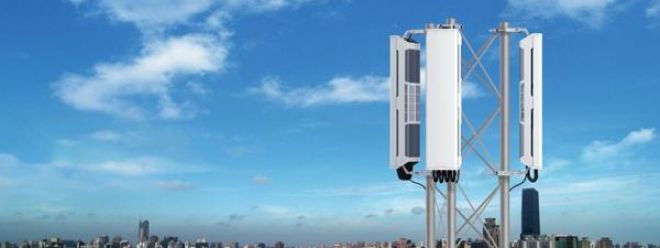
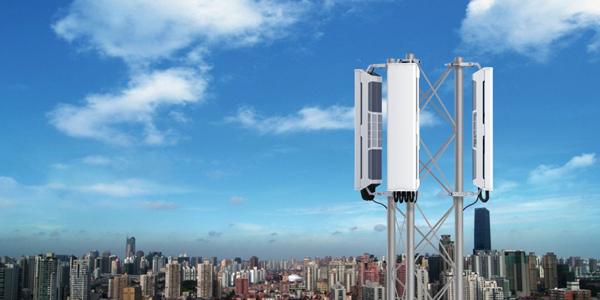
In the past few decades, mobile communication technology has developed from 1G to 5G. More and more base stations have been built, and network coverage has become better and better. Today, we can pick up mobile phones to surf the Internet and watch videos almost anytime, anywhere.
But have you found a problem, whether it is 3G, 4G or 5G, the quality of service provided is unstable and fluctuates greatly, resulting in the speed of mobile phone network sometimes fast, sometimes slow, and even sometimes the signal is full, and the network speed is also very high slow.
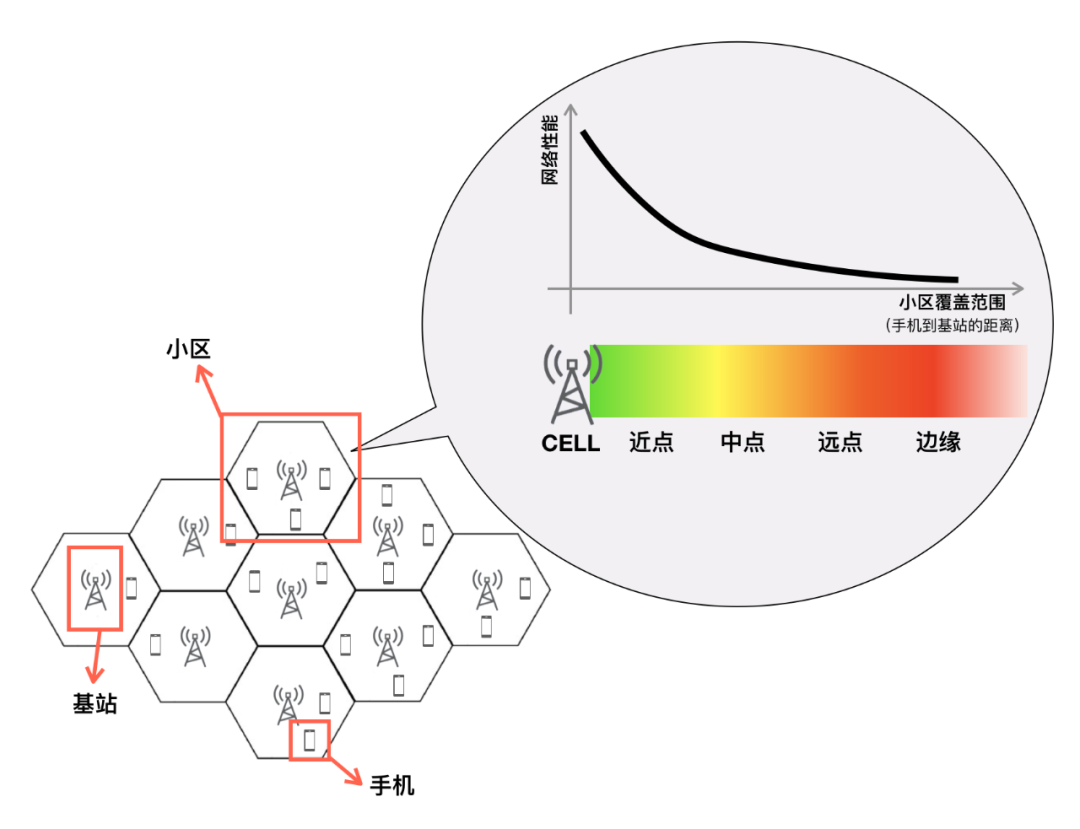
Specifically, the mobile communication network adopts cellular networking, and divides the entire coverage area into a plurality of hexagonal cells, and each cell is provided with a base station to provide services for mobile phones within the coverage area of the cell. In this way, each base station can cover the nearest cell, and the mobile phone can communicate with the nearest cell. However, within the range of each cell, the network service quality usually decreases as the distance between the mobile phone and the base station increases, resulting in a large difference in user experience. big.
What is the reason for this? Is there any way to solve this problem?
Let's go back to the era of 1G and 2G voice calls first.
The 1G network adopts analog technology and allocates bandwidth to different users through frequency division multiplexing. Not only does the network have low capacity and poor confidentiality, but also the network is easily interfered. decrease, resulting in a smaller effective coverage of each cell.
Entering the 2G era, GSM adopted digital technology, introduced technologies such as low bit rate coding and more advanced error correction coding, which improved system capacity, spectrum utilization, and system anti-interference ability, greatly improved user call quality, and enabled The effective coverage of the cell is improved.
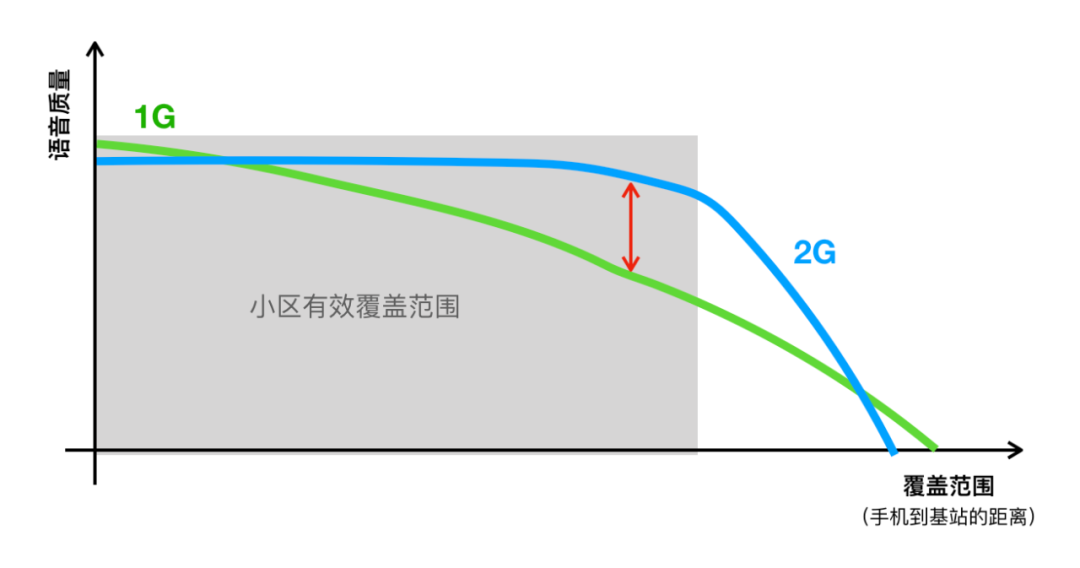
As shown in the figure above, under the 1G network, the user's voice quality will continue to decline as the distance between the mobile phone and the base station increases; under the 2G network, the downward trend is even more flat, which means that the 2G base station can Users provide high-quality voice calls.
At the same time, because the GSM network adopts the method of frequency reuse, different frequencies are used between adjacent cells to avoid mutual interference. In the GSM system, even if the user is at the edge of the cell, the network can still ensure good network quality, allowing users to Enjoy a great voice calling experience.
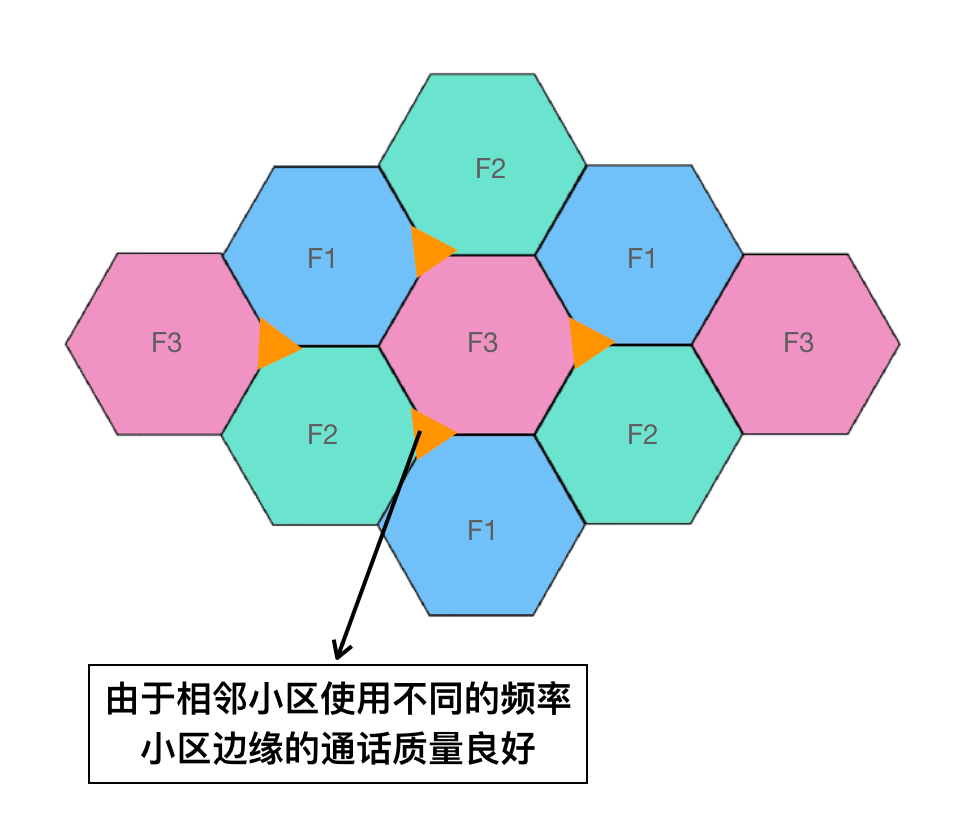
But entering the 3G/4G/5G data era, those users at the edge of the cell are no longer so lucky.
Entering the 3G era, in order to support data services, support larger bandwidth, and ensure higher Internet access rates for users, the WCDMA system adopts code division multiple access (CDMA) technology, and all cells in the entire network use the same frequency, so that the A frequency reuse plan is required, but a scrambling code plan is used to distinguish different cells and avoid adjacent cell interference.
This means that the SINR (Signal to Interference and Noise Ratio) will decrease as the distance between the mobile phone and the base station increases, and the SINR at the cell edge is lower, resulting in a much lower network rate experienced by the user at the cell edge than at the cell near or in the middle. point.
Not only that, because the WCMDA network itself is a self-interference system, as the number of users in the cell increases, the network traffic increases, the network interference will increase, and the effective coverage of the cell will decrease, which is what we often call the cell breathing effect. , that is, the cell coverage varies with the number of users. The community breathing effect is like a lot of people talking in a room. The more people talking at the same time, the louder the noise in the room. You can only hear each other's voice if you get close.
Frankly speaking, when 3G WCDMA was born, although the telecommunications industry often promoted code division multiple access as a new technology and new function, after the network construction was completed, operators discovered that this new technology actually made Network optimization and service assurance are very troublesome, and have also become one of the main challenges faced by the development of mobile communication technology into the era of data services.
In the 4G and 5G era, in order to cope with the growing demand for data services, the network needs a larger bandwidth, and all cells still use the same frequency band. Orthogonality between users to avoid interference between users, there is no longer the "breathing effect", but the cell edge will still receive interference from adjacent cells. Therefore, when the user is at the cell edge, due to the Interference, coupled with the distance from the base station itself, the SINR will still be reduced, resulting in poor service quality and low rate for users at the cell edge.
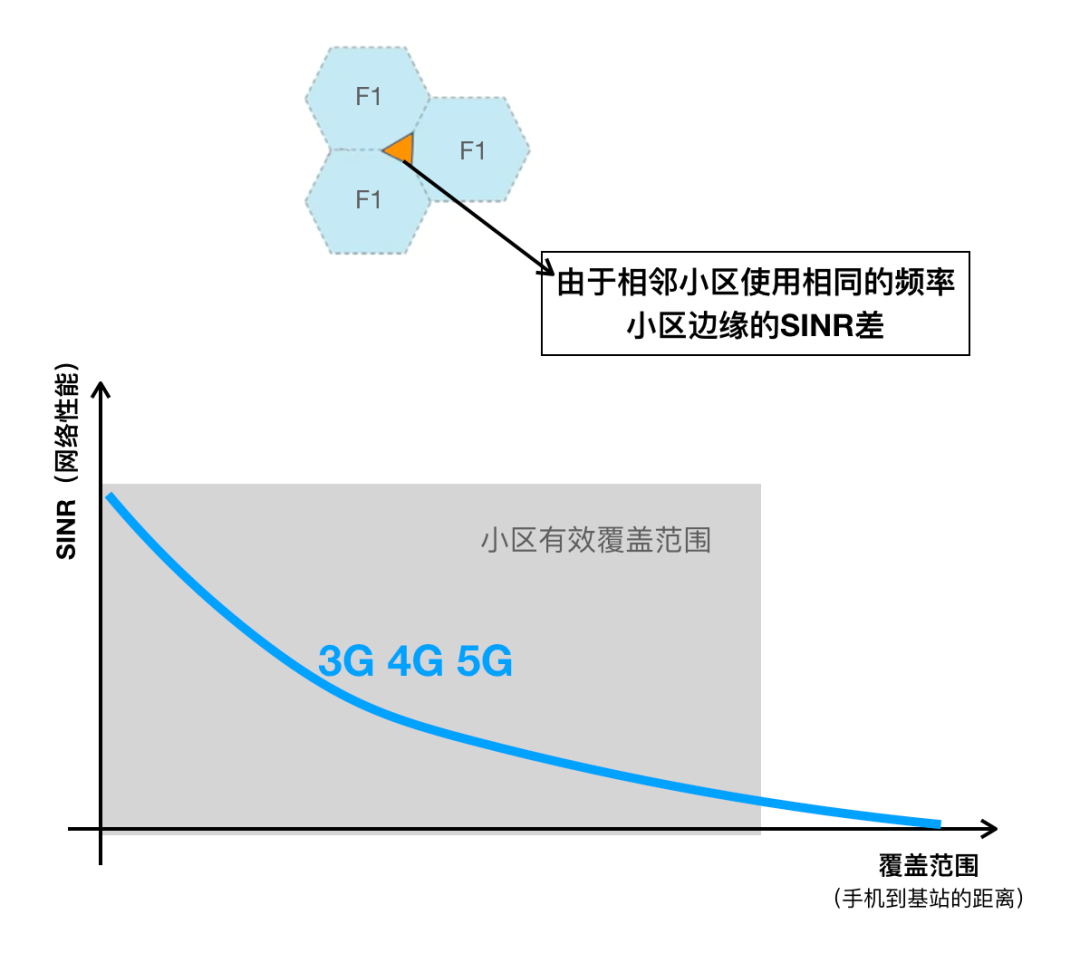
In short, entering the era of data services, from 3G to 5G, although the cellular network technology continues to evolve to address the ever-increasing demand for network traffic, they have a common defect: the variability of network service quality is too great, and the cell The gap between the edge rate and the cell center rate is too large to guarantee a consistent experience for each user.
And this problem is more prominent than the 2G GSM voice era.
Let's talk about this SINR. As mentioned above, SINR refers to the ratio of the useful signal power to the sum of the interference power and the noise power, which directly reflects the quality of the received signal. From the definition of SINR, it can be seen that there are two main factors that cause it to be poor: First, the interference is large. Sometimes we find that the mobile phone signal is full, the signal reception level is high, but the network speed is very low. This is because the interference is large. The second is that the signal reception level is low, that is, the network coverage is poor. For example, at the edge of the cell, the mobile phone is far away from the base station, the signal reception level is very low, and the SINR value is also small. Usually, when the signal reception level is high, the SINR is not necessarily good, because there is a large amount of interference, which will also lead to a low SINR value; but if the signal reception level is very low, the SINR must also be poor.
Then why is the signal reception level low when the user is at the edge of the cell? The main reason is that the height of the base station tower built on the ground is only a few tens of meters. When the antenna on the tower transmits signals to the mobile phone, it will be blocked by various obstacles such as buildings and trees, and the radio waves will be reflected, scattered, and diffracted. After transmission and transmission, the signal is greatly attenuated, so that when we are far away from the base station (such as at the edge of the cell), the signal level will drop rapidly, and even sometimes even if we are close to the base station, the signal reception level is very low.
Well, after talking so much, we finally get back to the topic. If the base station is moved from the ground to the air, can the above problems be solved?
Taking the HAPS (High Altitude Platform System) currently being tested by many operators as an example, the base station equipment is installed on a flight platform about 20KM away from the ground, located in the stratosphere, and the air-to-ground method is used to reach the ground. Mobile phones or IoT terminals provide connectivity services.
In this way, the wireless signal propagates in the line-of-sight (LOS) environment. Except for indoor coverage scenarios, the wireless signal still needs to penetrate the building. In other scenarios, the wireless propagation path is almost unobstructed by obstacles, and each terminal The distance from the base station in the air is almost the same, which can better solve the problem that the farther the terminal is from the base station, the lower the signal level in the ground base station environment.
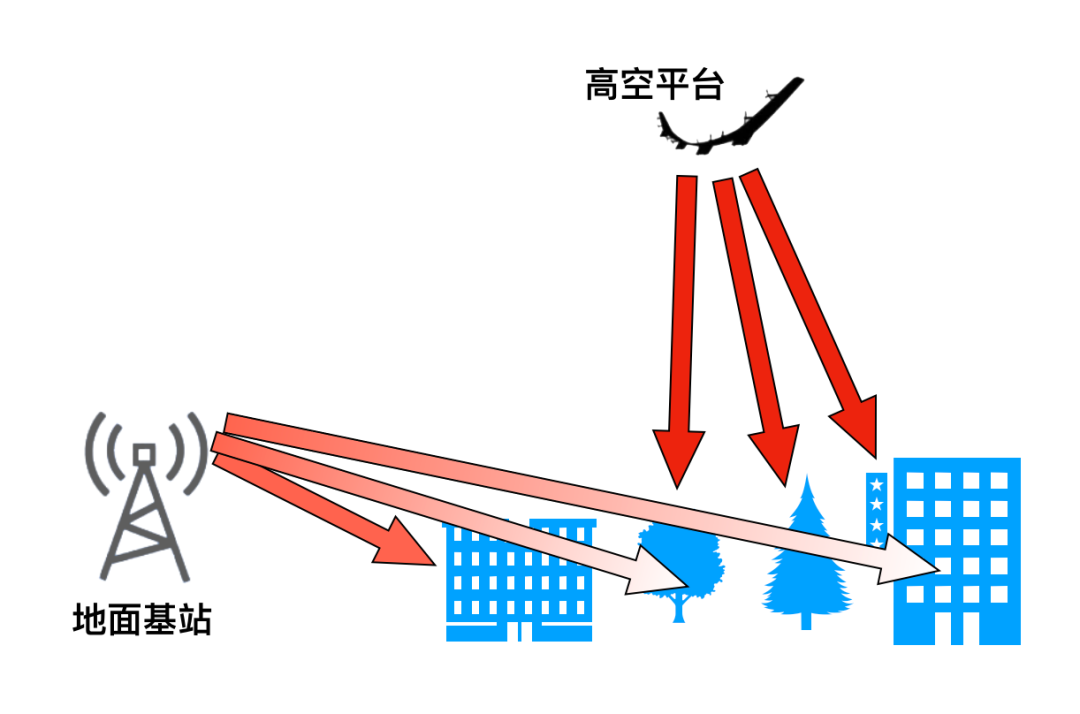
Of course, the problem comes. Although the air base station and the ground terminal are in a line-of-sight environment, the signal propagation loss is small, but since the distance between the two is more than 20KM, the transmit power and uplink loss of the terminal are the constraints of the air base station. Into the short board of reality.
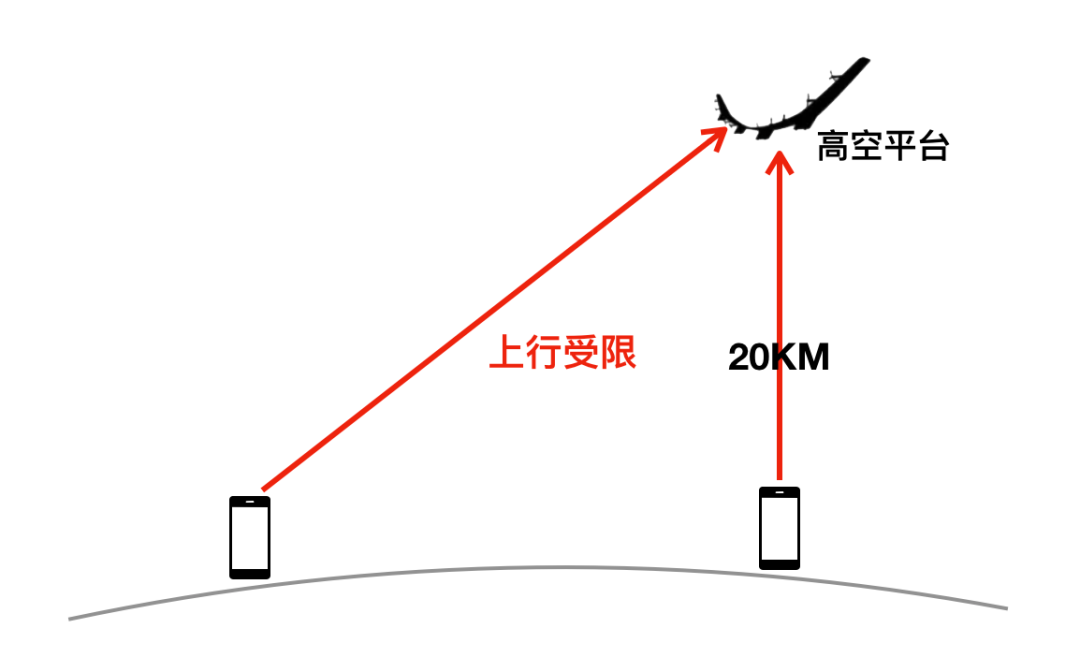
The problem can also be solved. The current practice in the industry is to use a large-diameter, high-gain active antenna to improve the uplink capability by obtaining a receiving gain of about 30dB. This antenna is very large, and the diameter is about 3 meters in order to obtain effective gain in the 2GHz frequency band.
This large-scale active antenna also supports narrow beam transmission. By transmitting multiple narrow beams (up to hundreds) to the ground, each beam corresponds to a cell, and usually the radius of each cell is about 1-2KM, so that the The ground forms a continuous coverage area consisting of multiple cells.
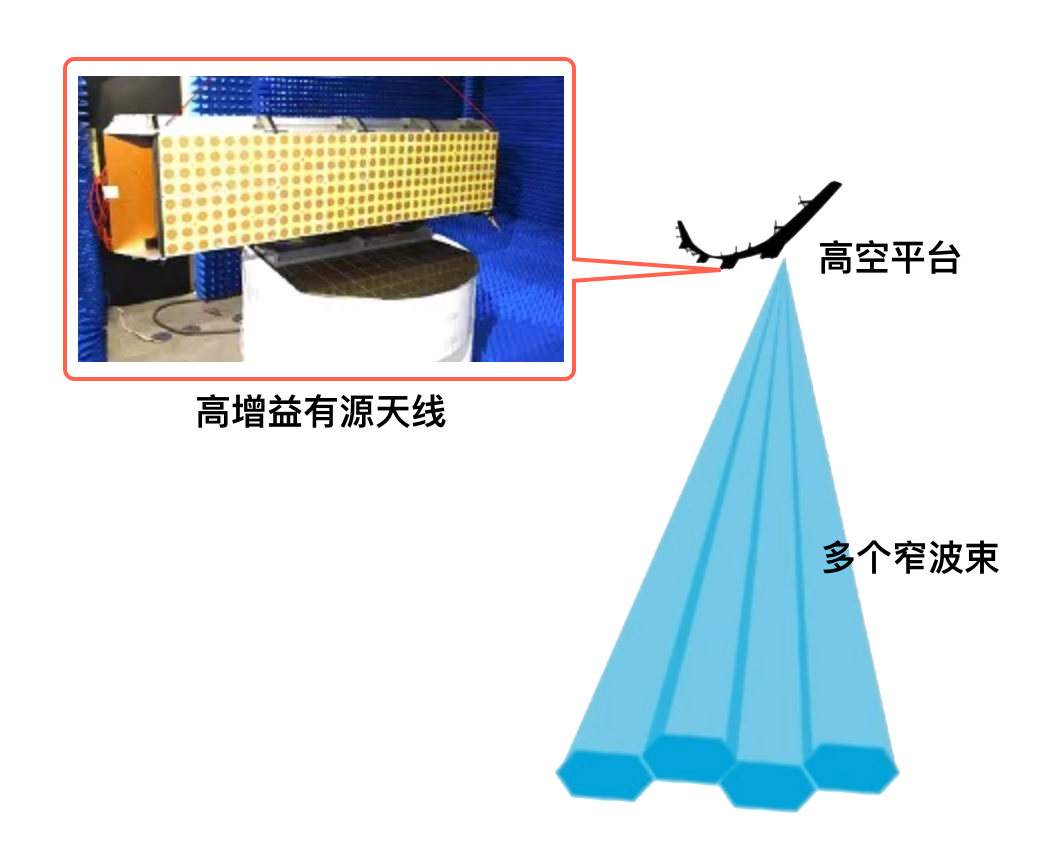
Since these narrow beams have a good ability to suppress interference, and in the air-to-ground scenario, the distance between each terminal and the air base station is basically equal, which can better solve the problem of SINR as the distance between the terminal and the base station increases. The problem of rapid decline enables terminals at different positions on the ground to obtain good SINR, bringing a consistent network experience to all users.
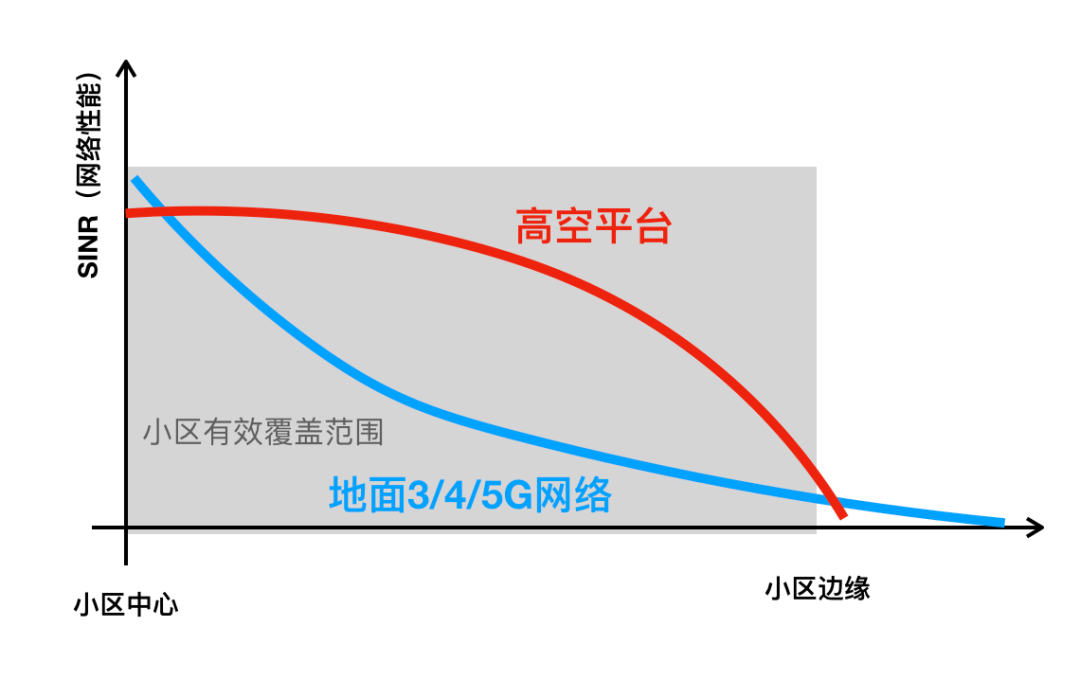
Therefore, the "air base station" can not only improve the wide-area coverage of the mobile network and face the continuous growth of data traffic in the future, but also solve the long-term challenge faced by the 3/4/5G network - the poor experience at the edge of the cell, which can make all the Users, regardless of their location, get a good, consistent web experience. This is one of the main reasons why the industry is working hard to explore moving base stations to the sky.